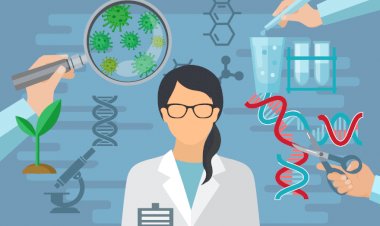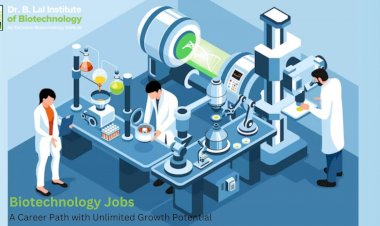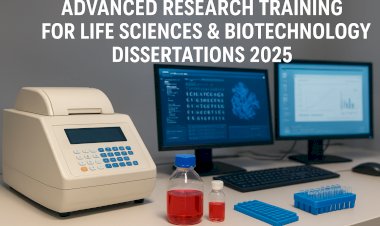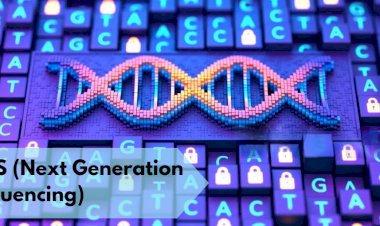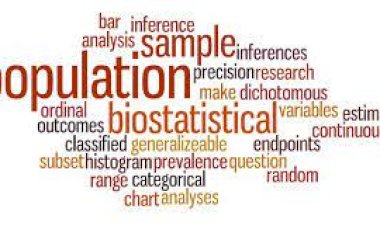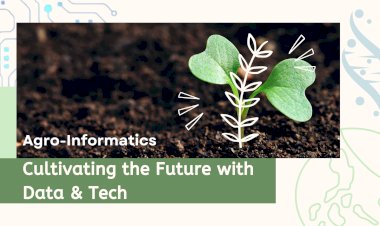Introduction to NGS (Next-Generation Sequencing): A Revolution in Genomics
Next-generation sequencing (NGS) has revolutionized the world of genomics, offering faster, more accurate, and scalable DNA and RNA sequencing. This blog delves into the transformative power of NGS, explaining how it works, its various platforms, and its critical applications in fields like medical research, diagnostics, agriculture, and environmental science. From whole-genome sequencing to cancer research and microbiome studies, NGS is reshaping the way we understand genetics. We also explore the challenges posed by this technology, including data analysis and storage, while highlighting its immense potential for driving future breakthroughs in medicine and beyond.
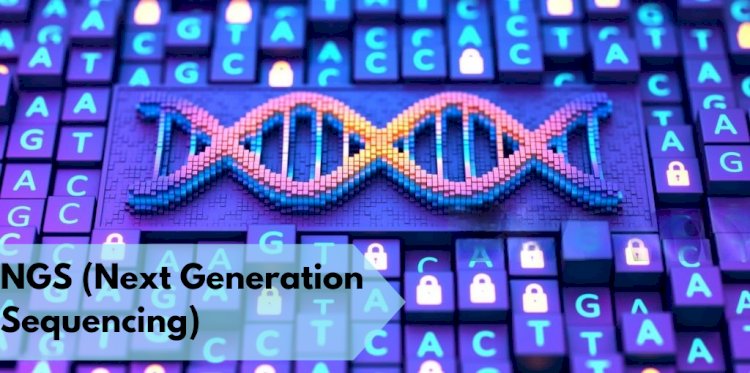
Introduction to NGS (Next-Generation Sequencing): A Revolution in Genomics
Next-generation sequencing (NGS) has transformed the genomics landscape, granting researchers an unparalleled opportunity to examine the genetic constitution of organisms. Unlike conventional sequencing methods, NGS offers quicker, more precise, and highly scalable DNA and RNA sequencing. Consequently, it has become a vital resource in numerous sectors, such as medical research, diagnostics, agriculture, and environmental science.
In this blog, we will delve into what NGS entails, the mechanisms behind its operation, and the diverse applications that are propelling scientific breakthroughs and advancements in medicine.
What is NGS?
Next-generation sequencing, commonly known as high-throughput sequencing, is an innovative sequencing technology that enables researchers to sequence substantial quantities of DNA or RNA simultaneously. NGS offers a more thorough and efficient substitute to the traditional Sanger sequencing method, which can be labor-intensive and expensive for extensive sequencing endeavours.
NGS platforms allow for the sequencing of entire genomes, targeted regions of interest, or transcriptomes (the complete collection of RNA transcripts in a cell or organism), making it an essential tool for examining genetic information with unmatched depth and scale.
How Does NGS Work?
NGS technology generally operates by dividing DNA or RNA into smaller pieces, which are subsequently amplified and sequenced simultaneously. Here’s a simplified overview of the NGS procedure:
- Sample Collection and DNA/RNA Extraction: Initially, a sample containing the desired DNA or RNA is obtained. This sample may originate from blood, tissue, saliva, or even environmental sources. The DNA or RNA is then extracted and readied for sequencing.
- Fragmentation: The extracted DNA or RNA is broken down into smaller segments, usually ranging from a few hundred to several thousand base pairs in length. These segments are then utilized to create a sequencing library.
- Library Preparation: In this phase, short synthetic DNA sequences known as adapters are attached to the ends of the fragmented DNA or RNA. These adapters enable the fragments to adhere to the sequencing platform and act as sites for amplification.
- Amplification: The fragments undergo a process called Polymerase Chain Reaction (PCR), which amplifies them. This leads to the production of numerous copies of each fragment, creating clusters of identical DNA sequences that can be readily read during sequencing.
- Sequencing by Synthesis: The sequencing system reads individual DNA or RNA fragments by creating complementary strands, utilizing nucleotides labelled with fluorescent markers (A, T, C, G). Every nucleotide emits a distinct fluorescent signal that the sequencing device captures. The instrument logs these signals to produce a sequence of bases that corresponds to the original DNA or RNA.
- Data Analysis: After the sequencing process is finished, the raw data is processed and analyzed using bioinformatics software. The resulting information can be aligned with a reference genome or employed for de novo assembly to detect variations, mutations, and patterns of gene expression.
Types of NGS Platforms
Some companies offer NGS platforms, and each company has a unique opportunity. The most popular platform is:
- Illumina: Illumina is one of the main suppliers of NGS technology. Their platforms, such as the NovaSeq, NextSeq, and MiSeq series, provide high-performance sequencing with excellent accuracy, so it's ideal for extensive use from the entire genomes to the targeted sequencing and RNA-Seq.
- PacBio (Pacific Biosciences): • PacBio provides a long-read sequencing technology to provide longer sequences (up to tens of thousands of base pairs), so it is ideal for applications that require complex genome resolutions such as structural options and repeatitive sequences.
- Oxford Nanopore Technologies: Nanopore Oxford Technology also offers long read sequencing with added benefit of portability. Its devices, such as the MinION, enable real-time sequencing and can be used for field-based applications.
Key Advantages of NGS
- High Throughput: NGS can produce up to billions of sequences per run, which allows the entire genomic or transcription for time for time compared to the traditional method.
- Cost-Effective: The effective economic cost of sequencing has dropped sharply from the moment of NGS. As a result, high performance sequencing has been able to access wider researchers and clinicians, democratizing the ability to conduct large scale genomic research.
- Accuracy and Sensitivity: NGS provide higher accuracy and sensitivity than traditional methods, which can detect rare gene variants, mutations and small-scale differences in sequences.
- Comprehensive Data: NGS generates enormous amounts of data that can be used in multiple applications, including sequencing of the entire genome, sequencing of exome, RNA sequencing and metagenomics.
- Versatility: NGS can be applied to various studies, from DNA sequencing to epigenetic analysis and microbiome research. Diversity is useful in various fields, including medicine, agriculture, and environmental sciences.
Applications of NGS
- Whole-Genome Sequencing (WGS): WGS is one of the most important NGS use. This allows researchers to provide ideas for genetic changes, mutations and evolutionary biology along the entire genome of the body. It is also used to identify mutations that cause disease and detect new genes related to hereditary disorders.
- Exome sequencing: Exome sequencing consists of only 1-2% of the entire genome, but aims for coding areas of genome protein, which contains most known options associated with disease. This is a profitable approach to research on genetic diseases.
- RNA sequencing (RNA-Seq): RNA-Seq is a powerful way to measure gene expression, identify alternative splicing events, and detect non-coding RNA. This provides an idea of how genes contribute to various diseases, including cancer.
- Targeted Sequencing: Targeted sequencing focuses on specific regions of the genome that are of interest, such as genes associated with a particular disease. This method is widely used in clinical diagnostics, cancer research, and personalized medicine.
- Microbiome Studies: NGS can analyze microbiome, a wide range of microorganisms living in the human body and the environment. Microbiome sequencing has led to insights into the relationship between the microbiome and diseases such as obesity, diabetes, and autoimmune disorders.
- Cancer Genome: NGS plays an important role in the research and treatment of cancer, which helps to identify genetic mutations and changes in cancer. This helps to determine potential biomarkers for early detection of cancer and to help personalized treatment strategies.
- Clinical Diagnosis: NGS switches clinical diagnosis to allow more complex genetic tests. It is used more and more to identify rare genetic disorders, evaluate genetic diseases, and help to choose a personalized treatment for cancer patients based on genetic mutations.
Challenges of NGS
While NGS has brought about numerous advancements, there are still challenges associated with the technology:
- Data Analysis and Interpretation: The sheer volume of data generated by NGS requires sophisticated computational tools and bioinformatics expertise to accurately interpret the results.
- Cost of Setup: While the cost of sequencing itself has decreased, the initial investment in NGS infrastructure (e.g., sequencers, computational resources) can still be high for some laboratories.
- Data Storage and Management: Storing and managing the large amounts of data generated by NGS can be a challenge, requiring substantial storage capacity and data management systems.
The Role of IBRI Noida in Advancing NGS Research and Education
The Indian Biological Sciences and Research Institute (IBRI) in Noida plays a significant role in advancing the field of Next-Generation Sequencing (NGS) by providing cutting-edge research, training, and educational programs. IBRI Noida offers state-of-the-art infrastructure and expertise in genomic research, making it a valuable resource for both professionals and students in the field. Through its NGS-related courses and workshops, IBRI empowers individuals with the skills needed to navigate the rapidly evolving world of genomics. The institute also collaborates with various research organizations, hospitals, and universities to facilitate ground-breaking studies that leverage NGS technology for personalized medicine, genetic disorder analysis, and drug development. With a focus on translating the power of NGS into real-world applications, IBRI Noida continues to contribute significantly to the global genomics community.
Conclusion
Next-generation sequencing has fundamentally changed the way scientists and clinicians approach genetics. With its ability to rapidly and accurately sequence DNA and RNA at scale, NGS has opened new doors for understanding diseases, discovering new biomarkers, and developing personalized treatments. As the technology continues to improve and become more accessible, we can expect even greater strides in genomics, with far-reaching impacts on medicine, research, and beyond.
Explore IBRI’s programs today to learn more about genomics trainings and unlock new career opportunities and stay ahead in the life sciences industry.
You can contact us at - Email: info@ibri.org.in or call at: (+91) 9999509892, 9971441910








